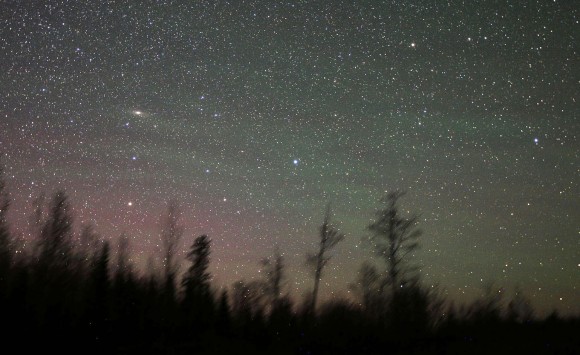| Online: | |
| Visits: | |
| Stories: |

| Story Views | |
| Now: | |
| Last Hour: | |
| Last 24 Hours: | |
| Total: | |
How to See Airglow, the Green Sheen of Night

Airglow shows as wavy stripes of pale green across the northeastern sky on May 24, 2014. Andromeda Galaxy at left. the banding was faintly visible with the naked eye as a soft, diffuse glow. The red glow at lower left is airglow from atomic oxygen 90-185 miles up. Details: 20mm lens, ISO 3200, 30″. Credit: Bob King
Emerald green, fainter than the zodiacal light and visible on dark nights everywhere on Earth, airglow pervades the night sky from equator to pole. Airglow turns up in our time exposure photographs of the night sky as ghostly ripples of aurora-like light about 10-15 degrees above the horizon. Its similarity to the aurora is no coincidence. Both form at around the same altitude of 60-65 miles (100 km) and involve excitation of atoms and molecules, in particular oxygen. But different mechanisms tease them to glow. (…)
Read the rest of How to See Airglow, the Green Sheen of Night (1,036 words)
© Bob King for Universe Today, 2014. |
Permalink |
No comment |
Post tags: airglow, aurora, emission, oxygen, spectrum
Feed enhanced by Better Feed from Ozh
Source: http://www.universetoday.com/112237/how-to-see-airglow-the-green-sheen-of-night/



